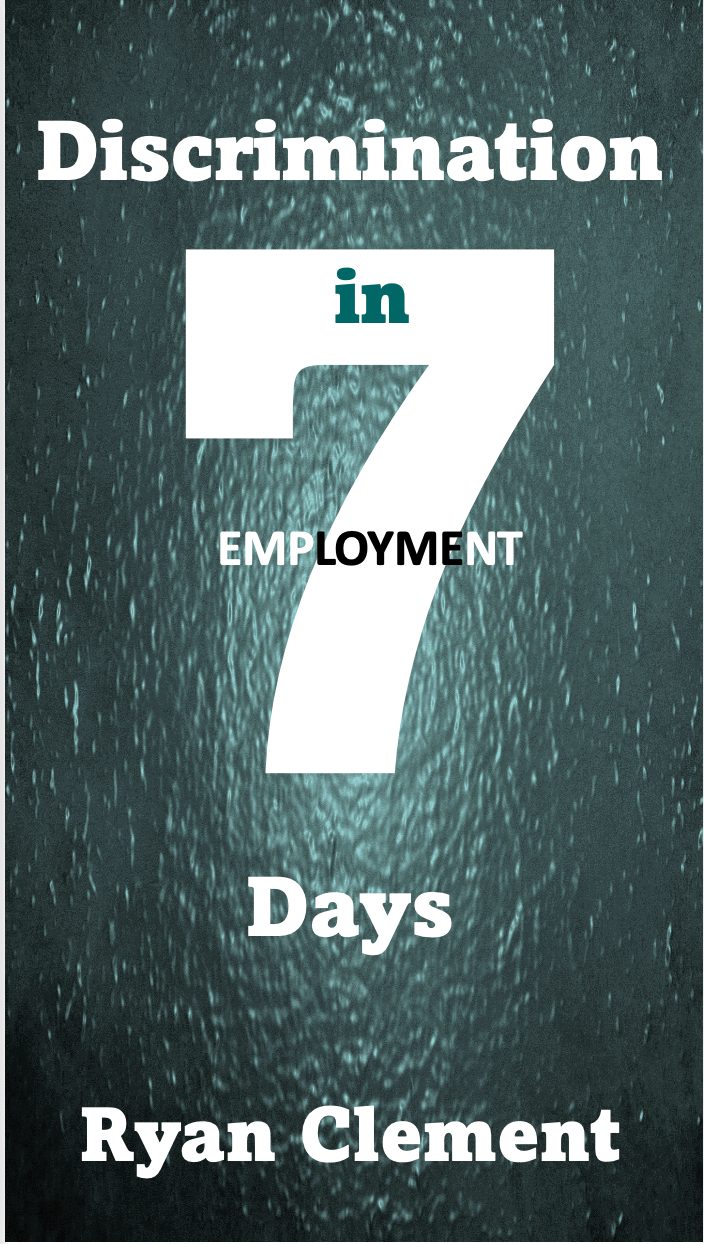by Ryan Clement
•
10 September 2025
s.109(1) and (3) of the Equality Act 2010 state, ‘Anything done by a person (A) in the course of A's employment must be treated as also done by the employer,’ and, ‘It does not matter whether that thing is done with the employer's or principal's knowledge or approval,’ respectively. The words, ‘in the course of one’s employment,’ seem easy enough to understand. But those six words are not always easy to apply. If one was employed as a lawyer, drafting, advising and appearing in court would be deemed to be in the course of one’s employment. I think we can all agree on that. What is the position, however, regarding one’s behaviour at an office party that neither involves any of the work hitherto mentioned nor in one’s job description? Can one’s behaviour be deemed to be in the course of one’s employment ? Let's extend it further. What is the position regarding one’s behaviour when being out with one’s colleagues at a local (to the office) wine bar? Can one’s behaviour still be deemed to be in the course of one’s employment ? Ok. Let's extend it even further. What about one’s behaviour whilst sharing a taxi after their evening out at the local wine bar? Can one’s behaviour still still be deemed to be in the course of one’s employment ? I am going to take the easy way out and not seek to answer these, but to say that they are all questions to be determine as matters of fact , applying the correct law ? In the well-known and leading case on the point, Jones v Tower Boot Co. Ltd , an employee, who was aged 16 was physically and verbally racially abused by two fellow operatives. That abuse consisted of, amongst other things, burning his arm with a hot screwdriver, throwing metal bolts at his head and calling him racially abusive names. As a result, the supervisor moved him to another part of the factory, but the abuse continued. He consequently handed in his notice and complained that he had been discriminated against by his employer because of his race. The employer argued that it should not be liable for serious acts of harassment by the claimant’s colleagues on the grounds that those acts were not done in the course of employment. This case was determined under one of the Equality Act 2010’s predecessors, the Race Relations Act 1976, but nothing turns on this. The employment tribunal found that the employee had been unlawfully discriminated on racial grounds and that the acts of the fellow employees had been done in the course of their employment for the purposes of s.32(1) of the 1976 Act, which stated, ‘Anything done by a person in the course of his employment shall be treated for the purposes of this Act […] as done by his employer as well as by him, whether or not it was done with the employer's knowledge or approval.’ The Court of Appeal ('CA') agreed. In the case of Waters v Commissioner of Police of the Metropolis , the CA, "had to consider whether a sexual assault, committed by a male police officer (“T”) against a female colleague at a police section house where she had a room and when both were off-duty, amounted to an act committed by T in the course of employment. The tribunal held that the conduct was not done in the course of employment. The Employment Appeal Tribunal (‘EAT’) agreed. Dismissing the appeal, the CA held, “T and the applicant were off-duty at the time of the alleged offence. He lived elsewhere and was a visitor to her room in the section house at the time and in circumstances which placed him and her in no different position from that which would have applied if they had been social acquaintances only with no working connection at all. In those circumstances, it is inconceivable in my view that any tribunal applying the test in the [ Jones ] case could find that the alleged assault was committed in the course of T’s employment.” In Chief Constable of Lincolnshire Police v Stubbs , a female police officer was sexually harassed by a male colleague at a pub where officers had gathered socially after the conclusion of their duties. The employment tribunal considered that the social gathering was closely connected to work and that the male officer’s conduct was done in the course of employment. In Sidhu v Aerospace Composite Technology Ltd , ‘Mr Sidhu was subject to racial abuse by a white colleague at a family day out at a theme park where that family day out had been organised by the employer. The employment tribunal dismissed Mr Sidhu’s contention that this was conduct in the course of employment, notwithstanding the fact that the employers had organised the event at which the conduct had occurred. The employment tribunal regarded as significant that the day out was not in the place of employment but at a public theme park; that everyone was there in their own time, not during working hours, and that the majority of the participants were friends and family rather than employees.’ The CA agreed. However, Gibson LJ said, amongst other things, “I recognise that another tribunal could properly have reached the conclusion that the incident on the day out was in the course of employment. But in my judgment, it is quite impossible to say that no tribunal could have reached the conclusion which the majority did on this point.” In Forbes v LHR Airports Ltd , a colleague of the Claimant, Ms S, posted an image on her private Facebook page, ‘that was capable of giving rise to offence on racial grounds,’ with the caption, “Let’s see how far he can travel before Facebook takes him off”. The image was shared with Ms S’s list of Facebook friends, including another colleague, BW. BW showed the Facebook post to the Claimant. The Claimant complained of harassment by Ms S. Ms S apologised and received a final written warning. Thereafter, the Claimant was rostered to work alongside Ms S. When he raised a concern, he was moved to another location. The Claimant complained to the Employment Tribunal of harassment, victimisation and discrimination. The Employment Tribunal dismissed the complaint. Whilst it found that Ms S had shared an image that was capable of giving rise to offence on racial grounds, her act of posting the message on her Facebook page was not an act done in the course of her employment and was therefore not one for which the Respondent could be liable. The Claimant appealed unsuccessfully to the EAT. It was held that s.109(1) of the Equality Act 2010 renders an employer liable for the acts of an employee done “in the course of employment”. Whether or not an act is in the course of employment within the meaning of that section is a question of fact for the Tribunal to determine having regard to all the circumstances: Jones applied. The relevant factors to be taken into account might include whether or not the impugned act was done at work or outside of work. It might not be easy to determine whether something was done at work if it is done online. In this case, the Tribunal did not err in law in concluding that Ms S’s act of posting the image on her Facebook page was not done in the course of employment; it was a private Facebook account, and the image was shared amongst her Facebook friends, one of whom happened to be a work colleague, BW, who took the subsequent step of showing the image to the Claimant at work. The outcome of the complaint might have been different if BW had been the target of the harassment complaint, as his subsequent act of showing the offensive image to the Claimant was done in the workplace and might be said to have been done “in the course of employment.” The EAT helpfully summarised the following: 13.1. an employer is liable for “anything done” by an employee A in the course of A's employment: s109(1) EQA 13.2. It is the alleged harasser, A, who must be acting in the course of employment: s109(1) EQA 13.3. the term “course of employment” is not to be interpreted in accordance with the well-established meaning in law derived from the law of tort: Jones 13.4. the words “in the course of employment” are used in the sense in which every layman would understand them: Jones 13.5. anti-discrimination legislation should be given a broad interpretation: Jones 13.6. the application of the phrase will be a question of fact for each Employment Tribunal to resolve, in the light of the circumstances presented to it, with a mind unclouded by any parallels sought to be drawn from the law of vicarious liability in tort: Jones 13.7. because the determination of what is in the course of employment is essentially a question of fact for the Employment Tribunal, different decisions may be made in circumstances that appear similar: 13.7.1. a sexual assault, committed by a male police officer against a female colleague at a police section house where she had a room when both were off-duty was found not to have been done in the course of employment: Waters 13.7.2. a male police officer who sexually harassed a female colleague at a pub where officers had gathered socially after the conclusion of their duties was acting in the course of employment: Stubbs 13.7.3. racial abuse by a white colleague at a family day out at a theme park was not done in the course of employment: Sidhu 13.8. the above examples emphasise that the question of whether a “thing” was or was not done in the course of employment is very much one of fact to be determined by the Employment Tribunal having regard to all the relevant circumstances: Forbes 13.9. while it is not possible or even desirable to lay down any hard and fast guidance some factors will generally be relevant such as whether the impugned act was done at work or outside of work: Forbes 13.10. if the “thing” was done outside of work the Employment Tribunal should consider whether there is nevertheless a sufficient “nexus or connection with work” such as to render it in the course of employment: Forbes. The Employment Tribunal may need to consider whether the circumstances are such as to make the situation an “extension of work and the workplace”: Stubbs 13.11. the “thing” may be done in the course of employment although it was not done at the workplace, or in working hours, if there is a sufficient “nexus or connection with work” such as when the situation is an “extension of work and the workplace” 13.12. whether the “thing” is done with the employer's or principal's knowledge or approval “does not matter”: section 109(3) EQA 13.13. a decision by an Employment Tribunal as to whether an act was done in the course of employment can only be challenged if there is a material misdirection as to the law, the decision is perverse in the sense that it falls outside the very wide ambit within which different views might reasonably have been taken about what is done in the course of employment, or the Employment Tribunal has demonstrably failed to take account of an important relevant factor or taken into account an irrelevant factor. In a recent case, AB v Grafters Group Ltd (t/a CSI Catering Services International) , ‘The respondent is a Hospitality Recruitment Agency. The claimant, and a colleague CD, worked from the Cardiff Branch of the Respondent. On 1 November 2021, the claimant incorrectly believed that she was due to work at Hereford Racecourse. She was late arriving at the respondent’s office in Cardiff, where she thought transport had been arranged to take her to Hereford. Instead, the claimant was given a lift by CD, who then told her she was not required to work that day. The claimant requested to be taken home, but instead CD drove her to a golf course near Pontypridd where the Employment Tribunal held that he subjected her to sexual harassment.’ Having directed itself correctly on the law, including, amongst others, the case of Jones , the employment tribunal found that CD did subject the Claimant to sexual harassment. However, on the question of whether the Respondent was liable for such actions because the sexual harassment occurred “in the course” of CD’s employment, it found that CD was not acting in the course of his employment from around 06:00 onwards on 1 November 2021 and, therefore, dismissed the complaint of sexual harassment against the Respondent. The Claimant appeal to the EAT. Allowing the appeal, thew EAT held, amongst other things, “Having concluded that the impugned act was done outside of work (Jones) the Employment Tribunal then needed to go on to consider whether there was “nevertheless a sufficient nexus or connection with work such as to render it in the course of employment” (Forbes) including whether the provision of the lift was an “extension of work and the workplace” (Stubbs).” Employers beware. Training your workers regularly and thoroughly in anti-discriminatory, harassment and bullying behaviour is imperative. Prevention is better than liability!






